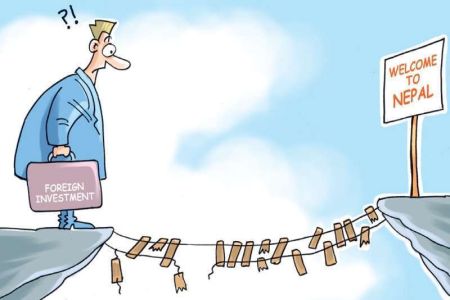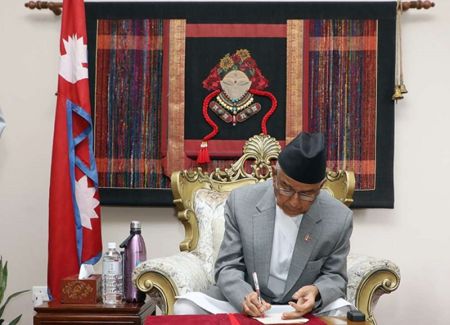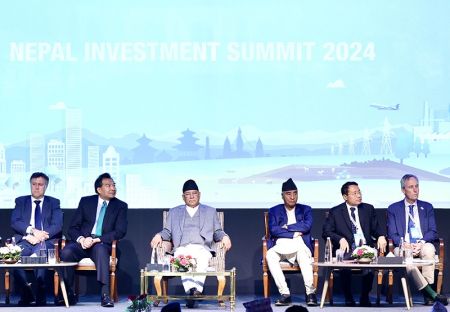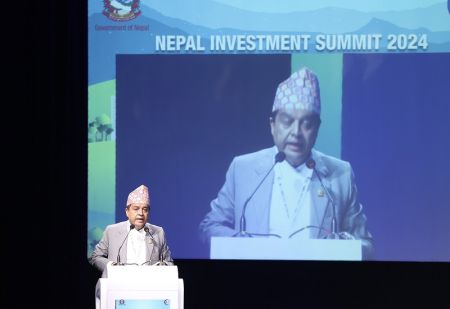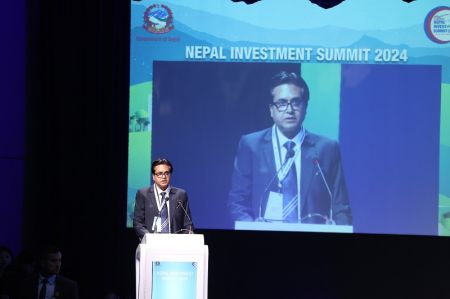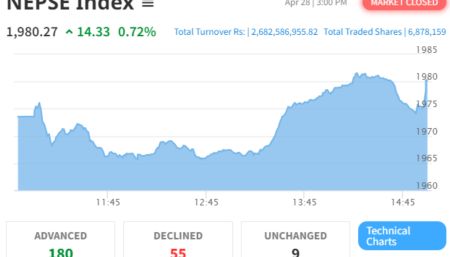Dr Jagan Nath Shrestha is a Professor and Council Member at Centre for Energy Studies, Institute of Engineering, Tribhuvan University. He is also the President of Nepal Solar Energy Society. In an interview with New Business Age, Dr Shrestha shared his views on the overall energy sector in Nepal and made a case for developing renewable energy in the wake of acute energy crisis plaguing the nation for quite some time now. Excerpts:
How significant a role can renewable energy development play to minimise the effects of the current electricity crisis?
We are having a gala time right now because it’s the rainy season. But once monsoon is over, it will be back to square one — we will experience 14-15 hours of power outage again. As for renewable energy, I don’t see a problem from such energy if we need energy only for lighting purpose. Solar electricity costs far less now compared to even three years ago. Apart from that, we have had innovations in lighting over the decades that have helped us reduce energy consumption. These have helped in household energy consumption.
However, the major impact of the current energy crisis is on industry, which needs a lot of energy. We need 1,100 gigawatt hours of energy for the industrial sector which is about 40 per cent of the total electricity produced by Nepal Electricity Authority (NEA). I do see a couple of options to save our industries though. NEA has close to 1.77 million subscribers of which 1.2 million are households that consume very little energy as in these households it is mostly used for lighting purpose only. If we could equip these households with 100W solar panels, we can easily save 500 gigawatt hours which can be diverted to industry. For this, we need appropriate policies. In this manner, we can save our industries from a complete collapse.
If all the investment in setting up solar power system in the households is to come from the government, there will be problems. It will probably take billions of rupees to provide 100W solar panels to these 1.2 million households. But if these households are made ready to share some of the investment, the problem can be reduced to a great extent. The government, on its part, can help by providing tax relief and subsidy of some kind. This will definitely encourage many people to opt for solar energy. On the other hand, NEA won’t have to lose because the industries are there to make up for NEA’s loss of customers.
But, let me caution that even though it looks very simple, its management may be complex. This calls for a blend of engineering technology and management art. Technologists or managers cannot produce results working separately, they should complement each other.
How do you see the priority given in Nepal to research and development (R&D) in the energy sector to tackle existing energy shortage?
A lot of R&D in the energy sector is being done in advanced countries on a continued basis. I cannot say how practical it is for a developing country like Nepal to do the same. What Nepal could probably do is to identify suitable energy resources for different areas and decentralise energy utilisation in the country. It is definitely a challenge for our universities and research institutions to conduct research for actualised energy applications. The outcome of this research should benefit the communities across the country and create employment. At the same time, such a study should look at protecting the environment. The energy must be efficiently used in a productive way.
What are the major impediments to the development of energy sector in Nepal?
There are two sides of the coin. We either have too many energy experts who know all about it but can’t agree with each other or we don’t know anything about energy development at all. I personally believe there are people in Nepal who have a lot of knowledge and ideas about the energy sector. However, they have not been able to work independently from the government or other agents. And, the characteristic of this group is disagreement among themselves. My request to these experts is: first ensure a position where we can generate about 3,000 MW for fulfilling the basic need of the households and of the industries. Once this objective is met, there is no harm on agreeing and disagreeing on numerous other counts. But till that time, all the experts must work out a consensus and stick to that. A disagreement among experts puts the government in a bind.
How do you view the debate on whether to produce power for export or for consumption within the country?
Of course, our focus should be to first meet domestic needs,. But, if we do manage to produce surplus energy, we should definitely export. However, in today’s context, how can we export when we don’t have enough for ourselves? Take Bhutan’s example: it invites foreign countries to invest in its hydropower development and puts some conditions on such investments. It wants them to produce as much energy as possible but allows them to export only when the country’s internal needs are fully met. On the other hand, we are talking about exporting power while the power outage hours are ever increasing. Nepal has a problem with capital. It takes a lot of money to develop hydropower but Nepal does not have that money. An investor will definitely want to see how he can recover his investment. My opinion is that Nepal should be self-sufficient in power first. While not wanting to export is an extreme view, we also cannot talk about exporting everything that we produce.
How is the possibility of alternative energy sources meeting the industrial needs of Nepal?
The perception that renewable energy cannot help industries is wrong. It all depends on the size and location of an industry. A medium scale industry may require anything between 500 KW and 10 MW. If such an industrial unit is situated near a micro or mini hydro plant, its energy needs may be fulfilled. Similar may be the case if the industry is located near a windy place or where there is plenty of sunshine. We can ascertain the energy feasibility for an industry after taking its size, nature and location into account. Talking about solar electricity, an average of 4-5 kilowatt hour per square metre per day can be generated in Nepal. During daytime, we can use solar energy directly. It can also be stored and used in the night or when there is no sunshine.
Which one will be the most economical source of energy for a particular industry?
After studying the energy needs of an industry, the most economical, beneficial and rewarding renewable energy option can be determined and worked upon. We must give priority to hydropower if it can be generated in a sustainable manner. Besides being economically feasible, hydropower can supply energy reliably when the concentrated power requirement is high. Comparatively, renewable energy may not be available when needed. Though, of course, it varies from case to case. There are many industries in the world which run completely on renewable energy. It is not only about solar or wind energy; it could be derived from biomass, agricultural and municipal waste also. The advanced countries rely on renewable energy because they care about environmental degradation, global warming, pollution etc. They focus on economic development, energy security and environment protection. Solar energy can be adequate for household needs, especially for lighting purposes. I know of households in Nepal who spend as much as Rs 800 per month on candles against Rs 80 for electricity. This is where micro-financing can come in and help such families to install solar panels worth Rs 3-4,000. The accessibility, impact and applicability of renewable energy are ever so growing because energy consumption of electronic devices has come down to from about 1/4th to 1/100th. Renewable energy has become a feasible option in urban areas as well. I personally feel that people have to become conscious and inculcate a habit of conserving energy. Every kilowatt hour of energy saved is equivalent to one kilowatt hour generated.
How important is bio-gas production given the amount of organic garbage generated in Nepal?
Bio-gas potential is immense. More than 250,000 bio-gas plants have been established so far mostly in remote areas where there is no electricity. A six cubic-meter bio-gas plant can generate thermal energy equivalent to one standard LPG cylinder in about 24 days. For the sake of drawing a comparison, you can say that bio-gas is providing 250,000 LPG cylinders worth of energy in the country. This is certainly an achievement and we can take this even further. Cow dung was used for operating bio-gas plants earlier. But a lot of experimentation has led to a state where anything bio-degradable is equivalent to cow dung. Therefore, we can certainly increase the number of bio-gas plants in Nepal. More than 70 per cent of the waste coming out of big municipalities is bio-degradable. We must process this waste and generate energy rather than sending it to landfill areas. The problem is that the waste does not get collected in a segregated manner. We must find ways to sort bio-degradable waste right at the source. Keeping different garbage containers at the source can save segregation cost as the users will throw the ‘right waste’ in a designated container. Sewage treatment is a serious practice in most cities of the advanced countries. The water is drained out in the river after removing bio-degradable waste from it and purifying the water. Waste management is absolutely crucial in the present context.
What’s the current state on private sector investment in renewable energy? What can be done to make this more adequate and on a bigger scale?
Private sector invests in a sector where it sees a profit. Its investment in renewable energy will happen once there is a healthy competition in the energy sector. The government doles out billions of rupees to buy petroleum products when prices get higher whereas the subsidy to micro-levl hydropower, solar and wind energy projects, for example, pales in comparison. Given this scenario, private sector investment in renewable energy is a distant dream. The government is biased towards petroleum products instead of letting them compete with other energy sectors. There should be a level playing field. The subsidy given to proven renewable energy technology is inadequate and impacts adversely the opportunity for private sector investment. The government should proactively employ proven technologies instead of giving subsidies. For example, the price of electricity sold by NEA has not increased in the last decade or so. Renewable energy sources cannot provide power at the NEA’s low rates , which are highly subsidised. Therefore, it’s no surprise that the private sector does not want to invest in renewable energy. They won’t get the desired returns. We need to correct the situation and ensure a level playing field to lure the private sector to invest.










